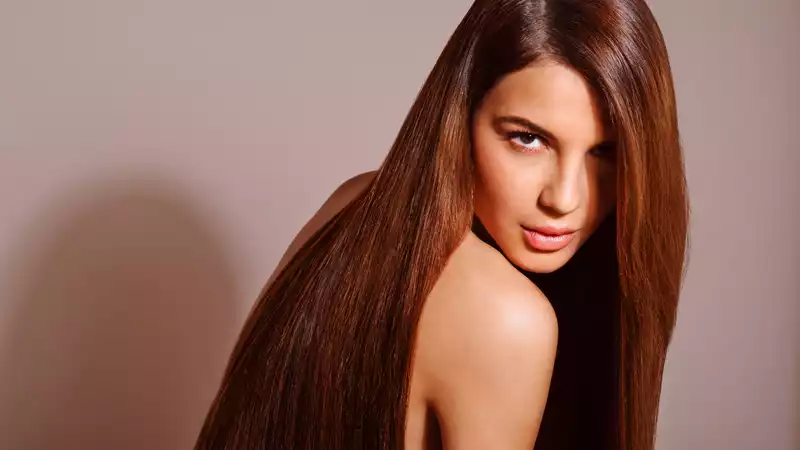
Keratin Hair Treatments: The Ultimate Guide
If you have experienced even a little frizz, you have probably been told by a friend or hairstylist to try a keratin treatment (also known as a "Brazilian blowout" or "smoothing treatment"). Keratin treatments are considered a "miracle" way to get smoother, shinier hair after just one appointment at your local salon. However, keratin treatments, like most chemical-heavy beauty treatments, do not suit all hair types. They can also be misled by misinformation on the Internet. So we asked experts what you should know about keratin treatments.
"People use different names for different treatments that are just incorrect and interchangeable," says Merikate O'Connor hair stylist and colorist at Tab and Sparks Salon in Los Angeles. She says, "The traditional keratin treatment, commonly called a Brazilian blowout, really straightens the texture of the hair." Alternatively, smoothing treatments like Goldwell Kerasilk (open in new tab) can help de-frizz hair and add shine without disturbing the hair's texture"
.
In short: If you are happy with your waves and curls, but want to reduce frizz (loosen up the texture), then a smoothing treatment is for you. If you want straight hair that looks like it's been ironed, go for a Brazilian blow-dry, aka keratin treatment. [But keratin is not the star of the treatment; the other ingredients are.
"Traditional keratin treatments aim to straighten the hair and usually use a solution that releases formaldehyde," says O'Connor, noting that stylists saturate the hair with the solution for 20 minutes. She adds, "If this entire process is done correctly, the texture of the hair is straightened and frizz can be completely eliminated for up to three months." [Smoothing treatments, on the other hand, contain no formaldehyde and penetrate deep into the cortex of the hair to smooth it, rather than staying outside the cuticle," she explains. The application process is similar, but the formula is not as potent (formaldehyde is required for flat ironing). Says O'Connor, "But it typically lasts four to six months."
Unfortunately, no salon-safe hair straightening system exists. If you want a salon's keratin treatment to take your texture from coarse curls to flat-iron straightening, you need formaldehyde.
"According to the EPA, formaldehyde is a carcinogen and can cause respiratory problems if frequently exposed," says Brenda Kamto (open in new tab), colorist specialist at 454 North Salon in Los Angeles.
Even if your salon uses formaldehyde-free straightening perms, the chemical may still be present. Kamt explains, "Formaldehyde is actually not a single component, it's a gas that is produced when other chemicals are exposed to heat." So technically, even if a product is formaldehyde-free, it can still contain components that produce that gas."
Nevertheless, he adds: "If you only have three treatments a year, the risk is negligible," Kamt says. Ideally, you should have the procedure in a well-ventilated salon, or open a window or go outdoors."
"If you have a traditional keratin smoothing treatment, you cannot touch your hair for three days afterward. You may not clip your hair, put it in a ponytail, or wash it." "
If your hair is color-treated, there is a risk of very slight fading or lightening after treatment, but both experts say this is not that common.
"Depending on the keratin line you are using, you may experience very slight fading or lightening with glosses, toners, demi-colors or semi permanent colors. This is primarily due to the use of a clarifying shampoo prior to keratin treatment."
In the weeks and months following the treatment, the hair should be slightly pampered with a hair mask that nourishes and protects the newly smoothed hair.
"In theory, traditional keratin treatments should straighten even fairly tight curls, but I've seen women end up with slight waves where they still need a flat iron," says O'Connor. 'I know women whose curls are completely unaffected by smoothing treatments.'
It all depends on the strength of the treatment, how it is applied, the temperature of the flat iron, the porosity of the hair, and other factors beyond your control, Cam says. But don't let that scare you away. O'Connor says, "Just do your research, read lots of reviews, and have a frank discussion with your stylist about what you want and what you don't want." "After all, it will wash away in a few months, anyway."
.
Comments